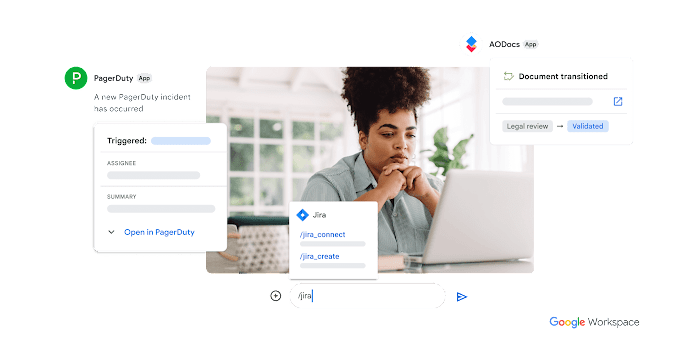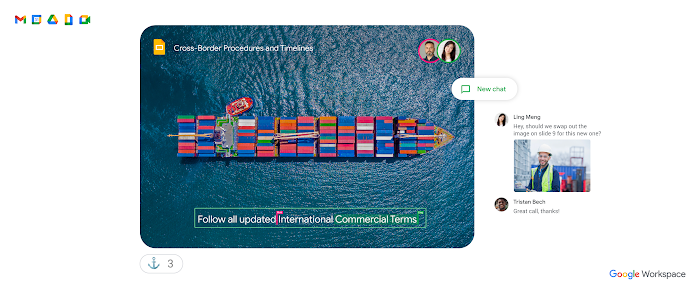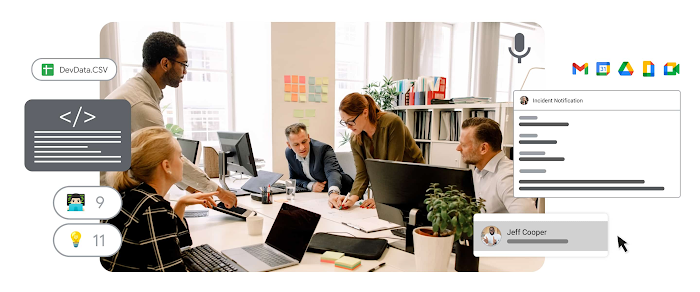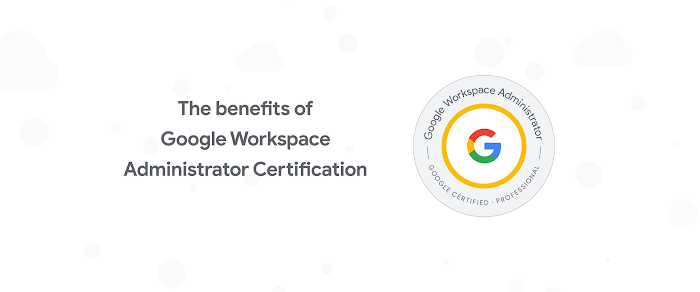What no-code automation looks like with AppSheet

Stephanie Wong
Developer Advocate
See what no-code app development looks like with AppSheet, and learn about the GA launch of AppSheet Automation. Learn why it means big productivity gains for developers and business users alike.
Try Google Workspace at No Cost
Get a business email, all the storage you need, video conferencing, and more.
SIGN UPAs developers, we talk about automation in the context of technology as often as your friends might talk about Bitcoin — and for good reason: automation has spanned the farthest corners of cloud computing, from infrastructure as code, container orchestration, and DevOps to machine learning and even billing management. It’s making life easier for infrastructure operators, developers, SecOps engineers, and cloud admins by saving them time, which, as we all know, is a finite resource.
More recently, automation has played a pivotal role in not just productivity gains, but also democratizing technology for citizen developers. Google Cloud AutoML for example, has lowered the barrier to entry for machine learning through pre-built models and automated model creation.
And now AppSheet is taking the baton and bringing automation to its platform with the GA release of AppSheet Automation. AppSheet is Google Cloud’s intent-aware, no-code application development platform that lets you create applications faster and with less investment than a traditional code-based approach. As an extension of the AppSheet platform, AppSheet Automation offers new, integrated workflow automation capabilities. It leverages Google AI to make it easier to automate business processes, and empowers those without coding skills to reshape their work with features like smarter extraction of structured data from documents and compatibility with a wide range of data sources like Google Workspace Sheets and Drive.
AppSheet Automation reclaims developer time
I recently had Jennifer Cadence, Product Marketing Manager for AppSheet, on the GCP Podcast, and she helped paint a clearer picture for me:
“Employees are losing an estimated 20% of time to tasks that could be automated1. It’s also mindspace and time we could use to focus on high impact work.”
Even as developers, we spend time on manual tasks that lengthen development time or add item after item to our list of things to do. We get requests from business groups to create applications to do things like invoice processing, employee onboarding, and integration with third-party systems. My good friend, John, for example is a data scientist who is still responsible every week for reporting data from a dashboard into a Google Sheet — something he finds frustrating and feels should be automated, so he can focus on high-value work like data experimentation.
Likewise, in the past I’ve spent hours on approvals, updating metrics from Salesforce into Sheets, or building an automation that extracts text from a Sheet into a Doc. For employees doing the same, it's not surprising retention can become problematic. The times I’ve felt the most fulfilled by and creative at my job have been when I get to do more impactful work.
AppSheet Automation is designed to give time back to developers and practitioners, and to democratize app development for business users. You can take reasonably complicated ideas and processes and translate them into working apps by using the platform to express them through automation. Technical audiences will see two benefits:
- Reduce development time by implementing solutions without coding.
- Reduce backlog by empowering the line of business users who are closest to the problem to build their own solutions. Our survey of early adopters shows that over 60% of those engaging with AppSheet Automation have an in-house solution but are seeking something more efficient.
Let’s talk about how.
Automation of course!
Through the Automation tab in AppSheet, the first new addition you’ll find are Bots, which are used to create automations by combining events with processes. This is the core of what makes AppSheet Automation easy to use. You envision a process or idea, and structure it intuitively here.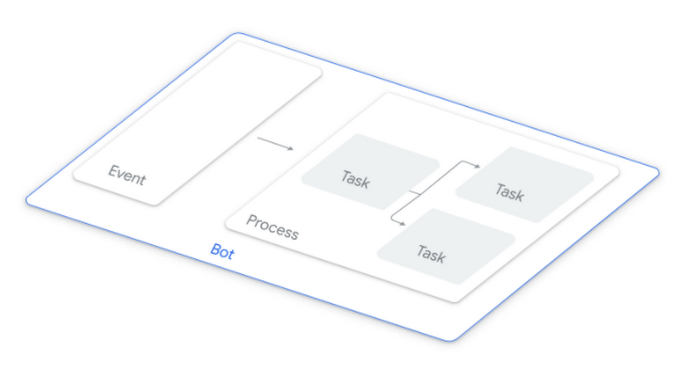

Bots can be configured to trigger a process on detection of an event (e.g., a new employee record is created in a Google Sheet), or according to a predetermined schedule. Once enabled, bots run in the background, listening for event triggers.
Bots work with your connected data source, and can be created or modified with a few clicks. Changes made are reflected in real time in the app editor so you always know what your automation consists of.


Events occur when data is changed (e.g., the priority of a service ticket is changed from low to high) or periodically on a schedule (e.g., every Monday morning at 9 AM).
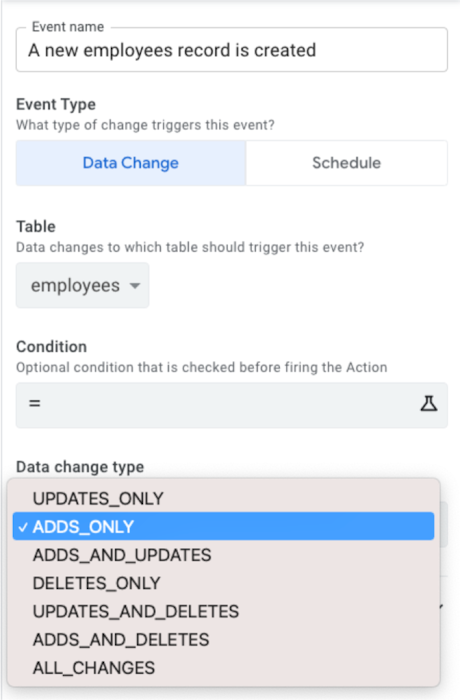

A Process is a sequence of steps (control steps and tasks). A simple process may have just a few steps, such as conditional branches or email tasks, and complete quickly. But a process can be complex, have multiple steps, and take hours or days to complete. It can:
- Loop over many records
- Call another process
- Wait for a human to respond to a request
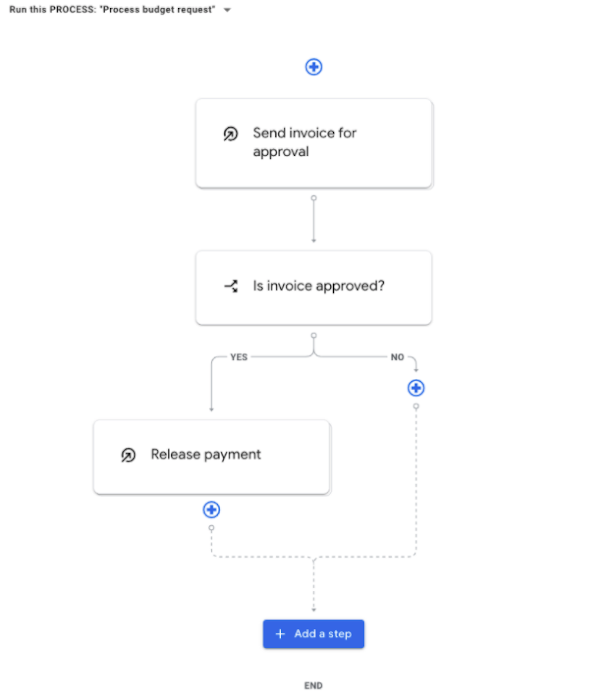

A Task is a simple activity that runs quickly, like “Send an email,” “Change data,” or “Call a webhook.”
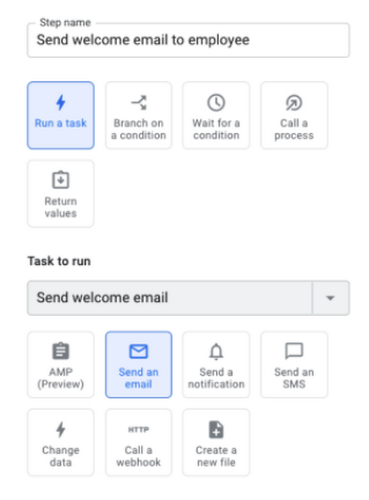

Modularity is a key design principle of AppSheet Automation. Tasks, Events, and Processes are reusable components. Tasks can be reused in multiple processes. Processes can call other processes. Processes and Events can be reused in multiple bots. This allows for “create once, reuse multiple times” strategies.
Intelligent document processing
With AppSheet Automation, you can also leverage intelligent document processing, which uses Document AI to automatically detect invoices, receipts, and forms from documents, PDFs, and images, and to trigger automations and natural language processing. AppSheet Automation connects to documents (and folders) in Google Drive. In the case of documents, you can choose from one of three currently supported types:
- Invoices
- Receipts
- W-9 forms
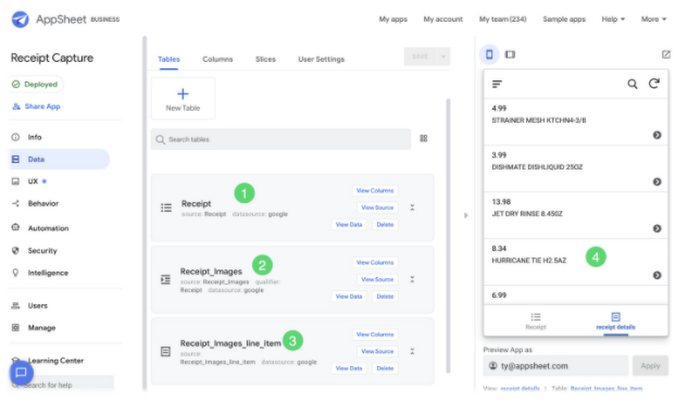

Intent-aware
Unlike code-driven platforms, AppSheet is a no-code, intent-driven platform. The platform infers the intent of the app being built, which makes the creation and customization process much easier than other options.
It uses natural language processing, anticipates the intent of the creator based on keywords, and surfaces contextual suggestions. For example, when you type in “Issue Resolved,” the platform presents bot suggestions. After you select one of them, you have a completely implemented bot ready to go with the event configuration, expressions, the process, and steps.
Suggestions are surfaced at multiple levels. When you click to add a new step and start typing in a keyword “re(turn)”, it presents contextual suggestions that make authoring simple and intuitive.
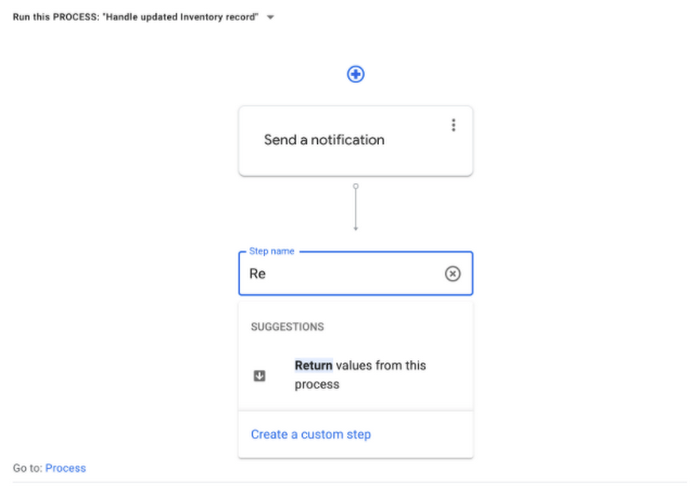

Integration with external data sources
In many cases, you need to integrate data from both internal and external company sources, like databases, Airtable, or Box, which requires developer expertise. Remember John, the data scientist? He’s one of a handful of scientists, and his developer team is limited. They can’t afford to spend time learning how to integrate new tools that aren’t part of their primary job, which is why AppSheet and its ability to integrate data sources can be invaluable.
It supports various data sources, including Google Workspace, Microsoft Excel, AWS DynamoDB, Dropbox, API management platforms like Apigee, and cloud/on-premises databases. Once you point AppSheet to your data source, it uses machine learning to understand the schema/structure of your data, including dependencies and relationships, and it develops relevant suggestions for bots, events, processes, and steps.
You can also tap into Sheets, Drive, and Salesforce through external eventing to create a more streamlined automation experience.How to get started
AppSheet Automation offers intelligent process authoring and rich connectivity, introduces bots, and addresses the long tail of human-centric processes, document based workflows, and app integration use cases. The onus of creating human-centric app workflows no longer needs to fall on development teams, and when it does, AppSheet Automation can help significantly reduce development times. Survey results show that AppSheet Automation has reduced the amount of time to develop automated solutions and time spent on manual tasks.
Sample apps
There are a ton of sample apps to get you started. Just login to AppSheet.com and head to “Sample apps” at the top.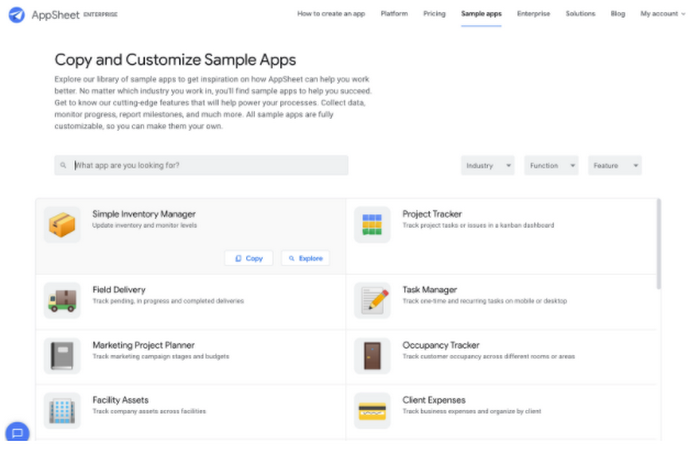

Videos

We also have many videos to help you learn how to automate processes, integrate with Workspace, build UIs, deploy your apps, and more.
Online community
There’s already a vibrant community around AppSheet, so check out community.AppSheet.com to join the conversation and engage with other creators from around the world. You can find helpful answers, submit feature requests, and explore AppSheet resources.
Head to AppSheet.com to start building with no-code!
You can find me on Twitter at @stephr_wong.1 Jobs lost, jobs gained: What the future of work will mean for jobs, skills, and wages How Much Time Are You Wasting on Manual, Repetitive Tasks?
